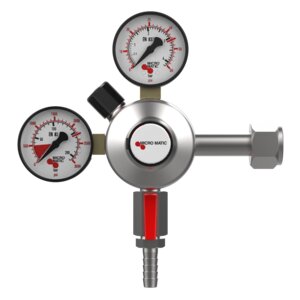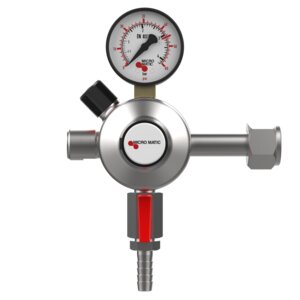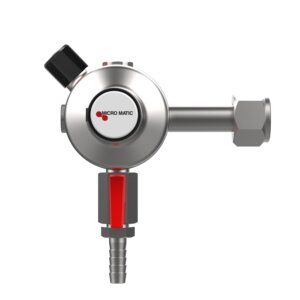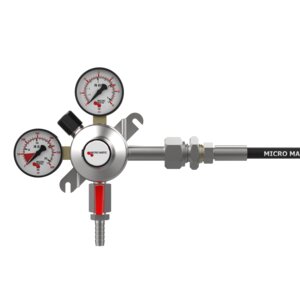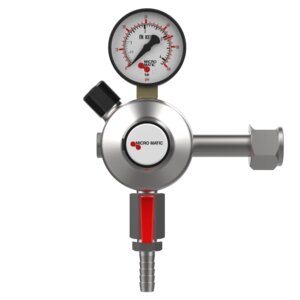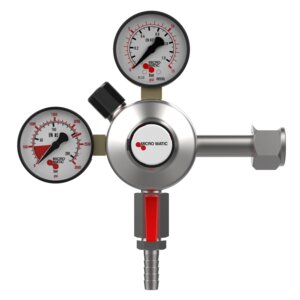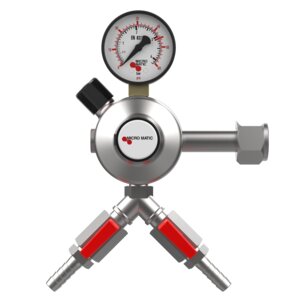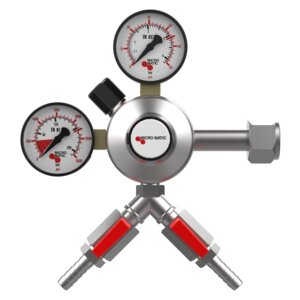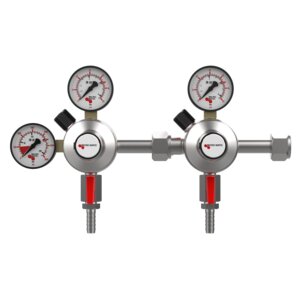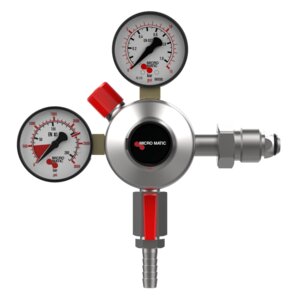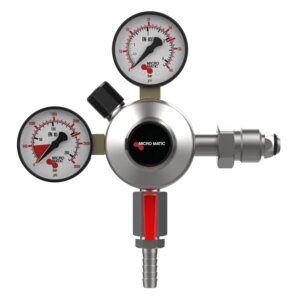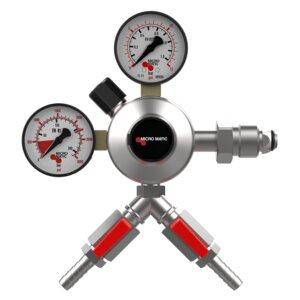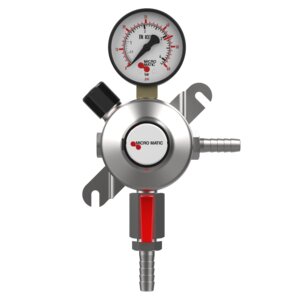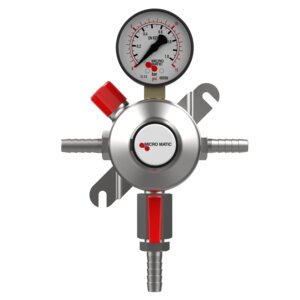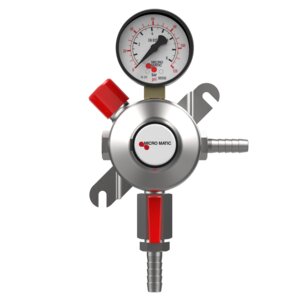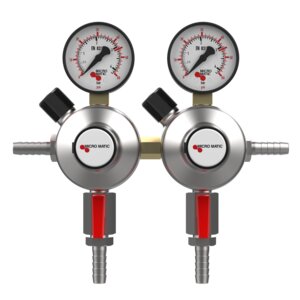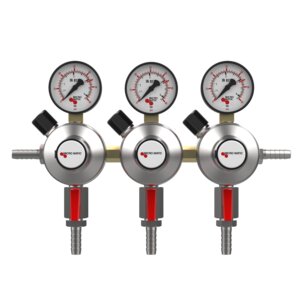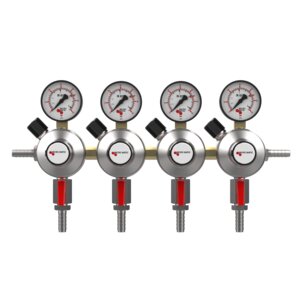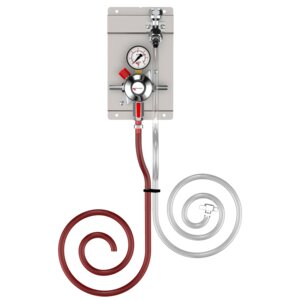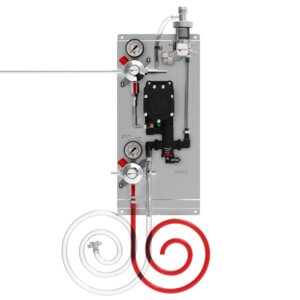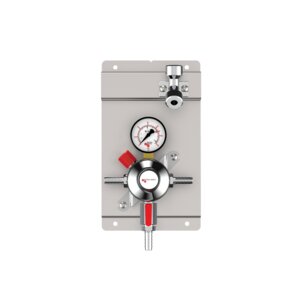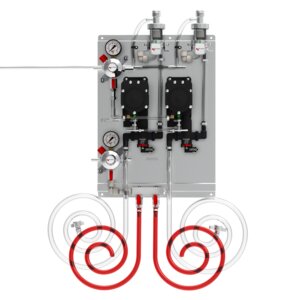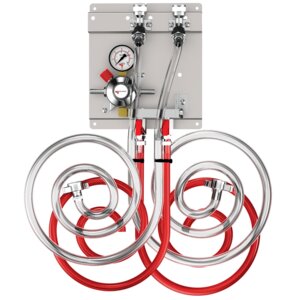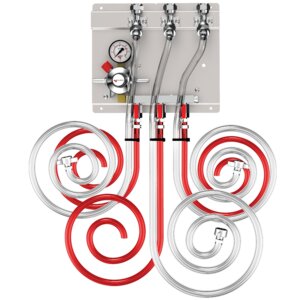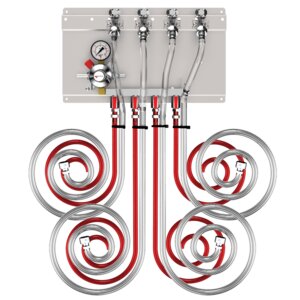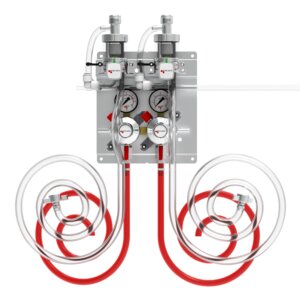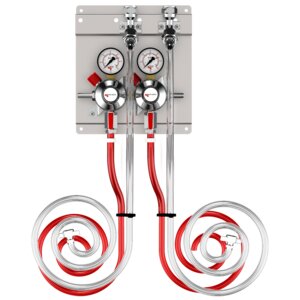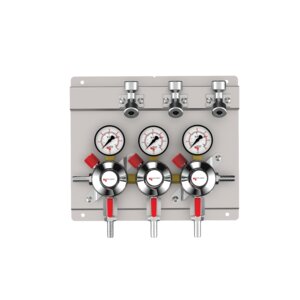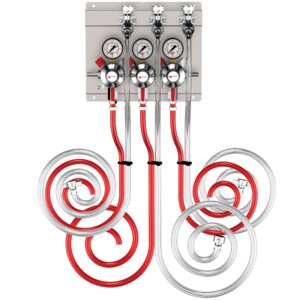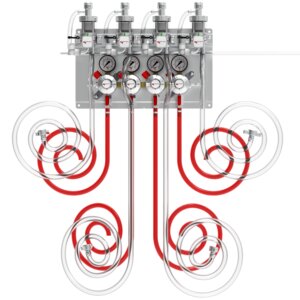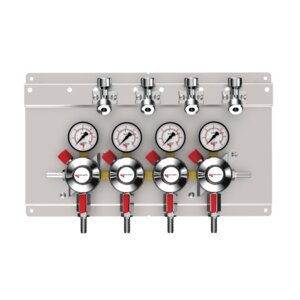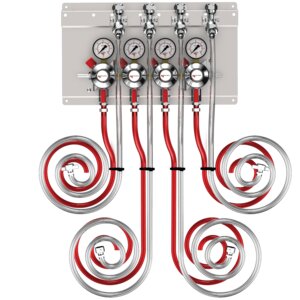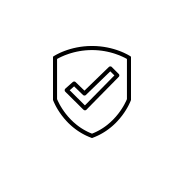Gas Regulators
- (55)
- (17)
- (10)
- (9)
- (7)
- (3)
- (2)
- (1)
- (1)
- (19)
- (5)
- (5)
- (5)
- (3)
- (1)
- (1)
- (10)
- (9)
- (7)
- (7)
- (6)
- (6)
- (5)
- (4)
- (3)
- (3)
- (3)
- (2)
- (2)
- (2)
- (2)
_________________________
Regulator Basics
_________________________
The most extensive gas regulator portfolio on the web! Micro Matic offers a full selection of CO2 and Nitrogen gas regulators. A properly adjusted and functioning draft regulator is one of the keys to dispensing quality draft beer.

The primary CO2 gas regulator is designed to decrease the gas cylinder’s high pressure to a lower, usable pressure for dispensing. This draft regulator can be used in a single pressure, single keg application or for servicing several secondary regulators downstream.
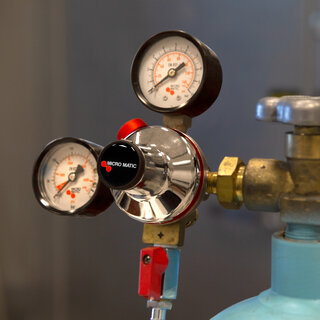
The primary Nitrogen regulator is designed to decrease the gas cylinder’s high pressure to a lower, usable pressure for wine dispensing or servicing a gas blender.
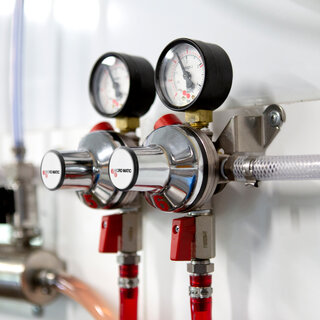
Secondary gas regulators reduce pressure from a primary regulator or gas blender and then this lower pressure services each individual beer keg. An application would be for a system using CO2 gas dispensing products with different carbonation levels. The primary CO2 gas regulator is set between 35 - 45 PSI supplying two adjusted secondary draft regulators reducing individual pressures of 12 and 14 PSI for the respective kegs.
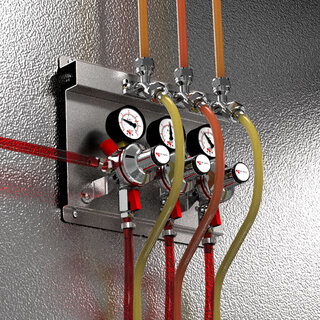
Secondary draft regulators mounted on a metal panel for easy installation on the walk-in cooler interior wall.
All panels include:
- Stainless steel wall brackets for transition between keg jumper hose and trunkline connectors.
- Extra regulator inlet nipple for gas pass-thru installations to additional panels.
Choice of two assemblies:
- Panel: regulators, wall brackets, extra hose nipple.
- Panel Assembly: includes regulators, wall brackets, extra hose nipple, keg jumper hoses with fittings, and red gas lines.
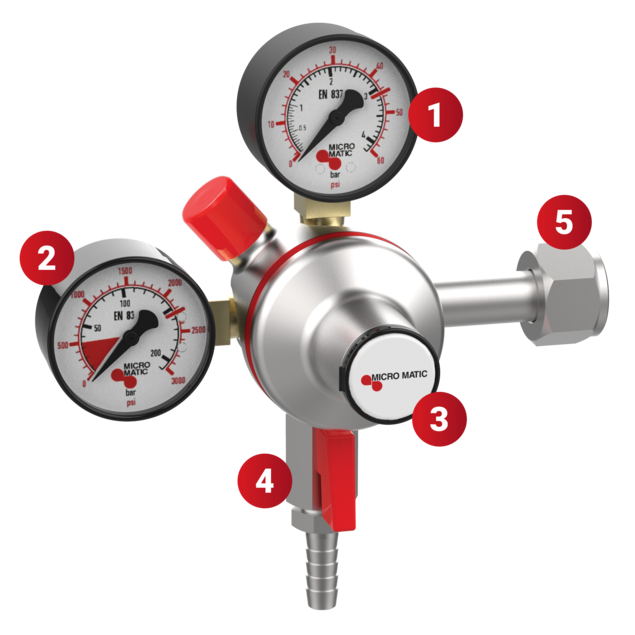
Regulator Parts
1 Low Pressure Gauge
Reads the amount of applied pressure to the keg. This gauge is located at the 12 o’clock position on the regulator body.
2 High Pressure Gauge
Reads the amount of pressure in the cylinder. This gauge is located at the 9 o’clock position on the draft regulator body. For CO2 cylinders, once pointer is in the red, liquid gas is depleted and cylinder should be changed. For Nitrogen or blends, pointer will zero out, thus indicating empty cylinder.
3 Adjustment Screw
Beneath the tamper proof cap you can set the output pressure by turning the screw clockwise for greater pressure. To reduce pressure, turn screw counter-clockwise completely, vent and readjust clockwise to correct pressure.
4 Shutoff
Located at the 6 o’clock position on the regulator body is the output source. The shutoff allows the gas to be turned off at the regulator if the coupler has been removed.
5 Tank Connector and Nut
Attaches the regulator to the gas cylinder. These fittings are located at the 3 o’clock position on the regulator body. Due to high pressures in the cylinders and this connection is a common location for leaks; it is critical to securely fasten the connector nut using the correct washer. Some draft regulator models have built-in connector seals while other models require a fiber or plastic washer to be installed with each tank change. Nitrogen connectors either have no washer or a built-in seal. Always tighten the tank nut a sturdy wrench, tank mount wrench, or regulator wrench.
If you don't see what you're looking for, or not sure how to use a gas regulator, please give us a call at (866) 291-5756 or send us an email at sales@micromatic.com. We also invite you to visit our Dispense Forum where troubleshooting topics and replies are posted. Our goal is your draft beer enjoyment!
